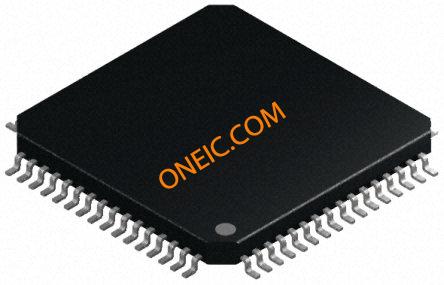ATMEGA649V-8AU
8-bit AVR microcontrollers with 64KB flash memory in 64-pin TQFP package
Manufacturer: ['microchip', 'atmel']
series introduction
# ATMEGA649V - 8AU Product Series Introduction
## 1. Overview
The ATMEGA649V - 8AU is a member of the highly - regarded AVR microcontroller family developed by Microchip Technology. This product series is designed to offer a powerful, flexible, and cost - effective solution for a wide range of embedded applications. With its combination of high - performance features, low power consumption, and extensive peripheral set, it has become a popular choice among engineers and developers.
## 2. Key Features
### 2.1 Microcontroller Core
- **AVR Architecture**: Based on the advanced AVR RISC (Reduced Instruction Set Computing) architecture, the ATMEGA649V - 8AU provides a high - level of code efficiency. It can execute most instructions in a single clock cycle, enabling fast processing speeds and efficient use of system resources.
- **8 - bit CPU**: The 8 - bit central processing unit offers a good balance between performance and simplicity. It is suitable for applications that do not require the complexity of a 32 - bit processor but still need reliable and efficient data processing capabilities.
### 2.2 Memory
- **Flash Memory**: It comes with 64KB of in - system self - programmable Flash memory. This large - capacity Flash allows developers to store complex application code, making it suitable for applications with extensive functionality requirements. The Flash memory also supports in - system programming (ISP), which simplifies the development and debugging process.
- **SRAM**: There is 4KB of static random - access memory (SRAM). SRAM provides fast data storage and retrieval, which is crucial for storing variables, buffers, and intermediate results during program execution.
- **EEPROM**: The device includes 2KB of electrically erasable programmable read - only memory (EEPROM). EEPROM is non - volatile, meaning it retains data even when the power is turned off. It is ideal for storing configuration data, calibration values, and other important information that needs to be preserved across power cycles.
### 2.3 Low - Power Operation
- **Multiple Power Modes**: The ATMEGA649V - 8AU offers several power - saving modes, including idle mode, power - down mode, power - save mode, and standby mode. In idle mode, the CPU is stopped while the peripherals continue to operate, allowing for reduced power consumption during periods of inactivity. Power - down mode shuts down most of the internal circuits, consuming only a minimal amount of power, which is beneficial for battery - powered applications.
- **Voltage Range**: It operates within a wide voltage range of 1.8V to 5.5V. This wide voltage tolerance makes it suitable for a variety of power supply scenarios, from battery - powered devices to systems with a regulated power source.
### 2.4 Peripherals
#### 2.4.1 Timers/Counters
- **Three 16 - bit Timers/Counters**: These timers can be used for a variety of applications, such as generating accurate time delays, measuring time intervals, and generating pulse - width modulation (PWM) signals. PWM is commonly used in motor control, LED dimming, and power management applications.
- **One 8 - bit Timer/Counter**: The 8 - bit timer provides additional flexibility for applications that require less precision or shorter time intervals.
#### 2.4.2 Serial Communication Interfaces
- **Universal Synchronous/Asynchronous Receiver/Transmitter (USART)**: The USART allows for full - duplex serial communication, enabling the device to communicate with other serial devices such as sensors, displays, and communication modules. It supports a wide range of baud rates, making it compatible with different communication standards.
- **Two
Images for reference

64-TQFP Pkg

64-TQFP

Image Preview